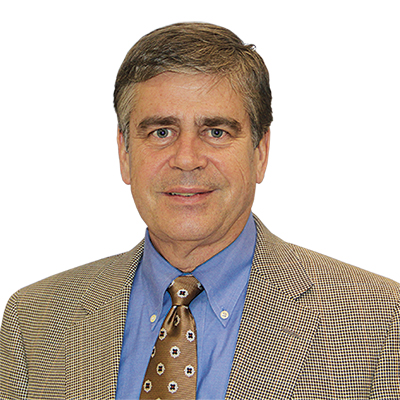This year and from now on: change

Karl Danneberger
My campus colleagues tell me that if it’s been dry, it’s going to get drier, if it’s been wet, it’s going to get wetter. Facing us in the new year and in coming years is how the climate is changing and how we will need to account for the changes to manage golf courses.
The federal government’s report on climate change released on Nov. 23, 2018, predicts climate changes that will increase temperatures and create changes in moisture patterns across the United States. The picture is especially dim for the Midwest, where temperatures are expected to rise more than in any other U.S. region, and the moisture pattern is expected to become wetter and more humid.
Although USDA plant hardiness maps are not a sign of climate change (because changes in the hardiness zones are based on 30-year weather averages and climate change is based on 50- to 100-year averages), we have seen zone changes of one-half to one full zone since 1990, which affects plants directly and tells us temperatures are warming. For example, since 1990, Ohio has gone from having about two-thirds of the state in zone 5 to now being almost completely in zone 6.
The warming trend reflected in zone changes appears to be moving northwest from the Southeast. The zonal changes, in part, help explain not only the warmer temperatures but the longer, warmer growing season.
Increasing temperatures in combination with wetter growing seasons in the Midwest will have a huge impact on agriculture and will lead to increased pest pressure and a drop in the quality of stored grains. Golf course managers will see wetter conditions that favor greater pest pressure, especially diseases, and a loss of golf rounds or powered golf car use because of wet conditions.
Continuing warmer temperatures — and importantly more wet and humid weather — will have an impact on how we manage turf. A short-term or pragmatic approach will not suffice. Long-term strategies and planning will need to match the impact of continually warmer, wetter weather in the Midwest.
Long-term disease control will change golf courses through management and structural practices to minimize and enhance the use of fungicides. Warmer, wetter weather means prolonged periods of major golf course diseases. Fungicides are effective against many of our summer diseases, but the cost of disease control will rise to a point that will be prohibitive for many. Structural changes to golf courses that promote air movement and drainage will have a positive impact on reducing disease severity. Tree-removal programs will be a long-term strategy for reducing disease and managing associated costs.
Most tree removal focuses on providing more light to shaded turf areas and enhancing golf shot strategies, but increasingly, tree removal influences the environment under which diseases develop. Air movement reduces leaf wetting by promoting evaporation and transpiration. Shortening the period of leaf wetness helps reduce conditions favorable for pathogen infection. Greens or fairways sitting in low or wet areas need to be considered for future renovation.
Technology — both current and future — will be needed. In areas where disease control is pervasive, we’ll need to incorporate technology like GPS for more accurate applications and for fungicide cost savings.
In addressing disease management, improved drainage must be a long-term feature for golf courses in general, but especially in the Midwest, not just for disease and pest control but to provide access and acceptable playing conditions. Wet conditions lead to course closures, or more likely, restrictions on golf car use. Improvement of drainage over the long term will be the most important improvement in golf course conditioning in a changing weather environment.
The coming years will see continuing environmental changes. This is the time to plan for long-term mitigation of these changes to your golf course.










